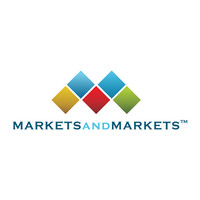Temperature Sensor Market New Research Study 2028
Every sector of the economy is changing, and right now, one of the most frequently discussed topics is the state of the environment. The trendy industry is dominated by terms like "global warming," "climate impact," and "global warming mitigation," but these aren't just catchy phrases that exist to make your business sound hip. Depending on your requirements and the type of sensor you purchase, several temperature sensors can be utilised for a variety of applications. Therefore, you will have access to a wide range of options if you need a portable, hand-held type of sensor to monitor ambient or body temperature.
This Five-Year Market Analysis examines the major transactions, participants, and emerging trends.
This study divides temperature sensors into three main categories: hybrid, non-contact, and contact types. Non-contact sensors assess temperature changes at a distance, whereas contact sensors are directly attached to the object or surface being monitored. Temperature measurements via hybrid sensors combine contact and non-contact techniques. North America, Europe, the Asia-Pacific area, and the rest of the world are examined in this study (RoW).
Download PDF Brochure @ https://www.marketsandmarkets.com/pdfdownloadNew.asp?id=522
Key Market Players
The Temperature Sensor Market was dominated by,
- Honeywell International Inc. (US),
- TE Connectivity Ltd. (Switzerland),
- Texas Instruments Incorporated (US),
- Endress+Hauser Management AG (Switzerland), and
- Siemens AG (Germany).
Due to their higher measurement precision and flexibility, temperature sensors are used most frequently in industrial settings. The need for ambient temperature sensors in household applications has increased as a result of rising environmental concern, nevertheless. One of the main areas of emphasis for businesses looking to invest in new technology will continue to be temperature sensors. This will be fueled by investments in improving analytics tools and extending sensing capabilities, which support managers in making more informed decisions.
What role does technology play in meeting high demand?
Within the following five years, the Temperature Sensor Market is anticipated to expand. This is a result of the rising need for temperature sensors across a range of applications, including smart buildings, self-driving cars, and agricultural management.
The temperature of items or surfaces can be measured and monitored using temperature sensors. They are frequently utilised in commercial and industrial settings where accuracy is crucial. In autonomous cars, temperature sensors are also used to identify objects and monitor their motion.
Speak to Analyst @ https://www.marketsandmarkets.com/speaktoanalystNew.asp?id=522
The Temperature Sensor Market is expanding quickly as a result of the rising demand for precise temperature readings. Technology investments are growing, which also contributes to this expansion. This is due to the fact that technology is offering fresh ways to forecast temperature trends and identify unusual temperatures.
Global Temperature Sensor Market Segmentation by Type
- Ambient Temperature Sensor
- Industrial Temperature Sensor
- Commercial Temperature Sensor
- Others
The ambient temperature sensor, industrial temperature sensor, commercial temperature sensor, and other segments make up the worldwide Temperature Sensor Market. The rise in popularity of smart homes and businesses is blamed for the market's expansion. The development of technology is also anticipated to support the market's expansion during the following five years.
Geographical Income from Different Parts of the World
At a predicted CAGR of 4.5% from 2021 to 2028, the Temperature Sensor Market is expected to increase from USD 5.9 billion in 2021 to USD 8.0 billion by 2028.
Based on type, end user, and geography, the market has been divided into segments. The market is segmented into contact sensor and non-contact sensor based on type. Water temperature sensor and air temperature sensor are additional categories for contact sensors. Infrared temperature sensors and laser beam temperature sensors are examples of non-contact sensors. Manufacturers, distributors, and retail buyers are examples of commercial and industrial end users. North America, Europe, Asia Pacific, and the rest of the world are included in the region.
The temperature sensors are employed for a variety of tasks, including the management of equipment or vehicles in diverse settings. They function by using one or more sensors to measure the environment, then transferring that data to a controller so that it may be utilised to control various actuators or devices close to the sensors.
Browse For More Details - https://www.marketsandmarkets.com/Market-Reports/temperature-sensor-market-522.html



Comments
Post a Comment